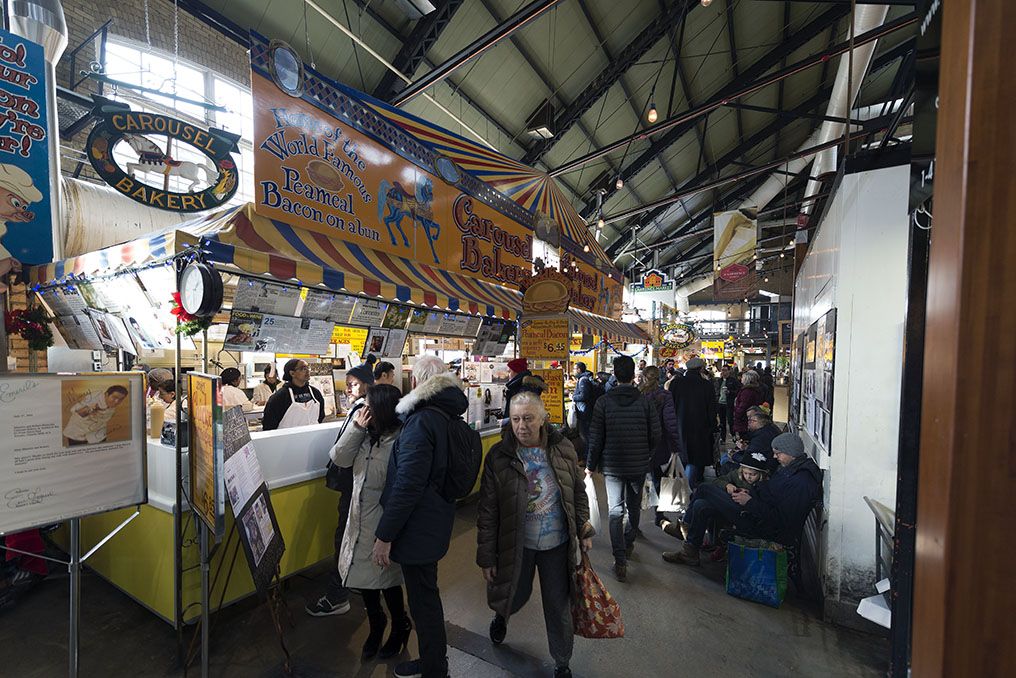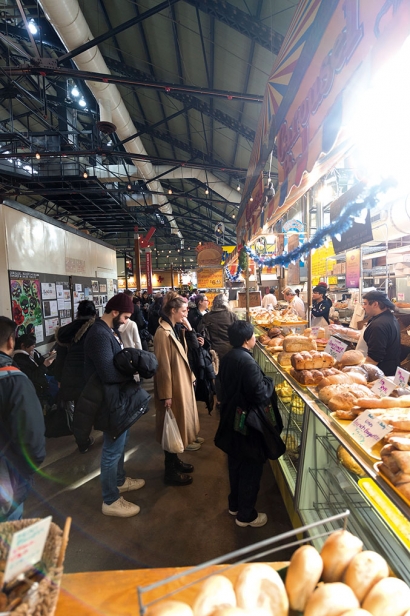The Legend of Hogtown
The late, great chef and television host Anthony Bourdain once proclaimed, “I want to go to Hogtown. A magical place, for magical animals, where a pig is always turning slowly, slowly on a spit somewhere close and the scent of bacon lingers like wildflowers in the air.” He was, of course, referring to Toronto — which he visited for an episode of his show, The Layover, in 2012. He clearly thought the city should have kept its nickname.
Toronto’s historical relationship with swine still resonates today. In fact, Mayor John Tory named the peameal bacon sandwich the city’s signature dish in 2016. But Hogtown’s roots date back to the late 1800s when an Englishman named William Davies came to Toronto and opened a pork-processing plant, just east of where the St. Lawrence Market currently stands.
A diseased hog market in his native U.K. created huge demand for Toronto’s pork products and Davies’ company soon became the largest pork processor in the Commonwealth by the turn of the century. The name Hogtown stuck and the rest is history.
But how exactly did Toronto get its iconic peameal bacon sandwich? Before commercial refrigeration, brining and curing was common practice to extend the shelf life of meat products. Various methods, from salt to oats, were used to coat the meat and keep pests out, but Davies allegedly came up with the idea to coat pork in a layer of ground dried yellow peas. Today, ground cornmeal is commonly used.
The modern-day hub of the peameal bacon sandwich is at the St. Lawrence Market's mainstay, Carousel Bakery, which helped popularize the sandwich beginning in the 1970s. The sammie is popular with tourists and famous chefs alike, including Anthony Bourdain, Bobby Flay, Emeril Lagasse, Chuck Hughes and David Chang. Brothers Robert and Maurice Biancolin now run the joint, which they inherited from their father.
Some people don’t realize that peameal bacon is a type of back bacon. Back bacon is enjoyed internationally in places such as England and Ireland. In the U.S., “Canadian bacon” is back bacon that has been cured and smoked.
Peameal bacon is leaner and cured differently here — and is, according Robert Biancolin, “principally Torontonian.” Traditionally, this cut of meat was one of the less desirable pieces of a hog. “Think of a typical loaf of bread,” he suggests. “The tapered end pieces aren’t as popular as the middle of the loaf.” In butcher shops, these end pieces would often linger, but Toronto butchers, including Biancolin’s father, started slicing and frying these cuts, which tasted delectable in a sandwich.
Carousel Bakery sells its sandwiches on a Portuguese bun with five types of mustard. “But I always tell first-timers to try the sandwich in its simple state — just the meat and bun,” Robert says, “in order to really appreciate the flavours.”
But what makes Carousel’s sandwich so good? “One thing we really stress is quality,” he explains. “When you give people good quality, they always come back.”
For the Biancolin brothers, the most rewarding aspect of producing Toronto’s famous sandwich is the connections they’ve built with people. “Recognition is, of course, well-appreciated. But it’s seeing the same people coming back for years, and even decades, bringing the next generation with them.”
He recounts a few examples of a long-time customer requesting peameal bacon sandwiches as his last meal on his deathbed. Another client who served in the Canadian forces in Afghanistan made Carousel his first stop after returning home. “When he was serving overseas, he told me his unit was cut off from supplies for a few days and everything was uncertain,” Robert says. ‘What got him through the hunger and uncertainty was remembering our peameal bacon sandwich.” It’s a sandwich that has clearly hit the spot with Torontonians and allows the legacy of Hogtown to live on.
Carousel Bakery (St. Lawrence Market)
93 Front St. E., Toronto, Ont.
stlawrencemarket.com | 416.363.4247






